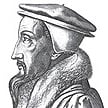LEAVING CMS
I finished my formal contract with CMS as a Director on 31/July 2012 And since then have been working as a self-employed Mission consultant.
For the past few months this has included helping CMS 3 days a week with transition. I have also been teaching the CYM Diversity Module and doing an engagement survey with SAC I have also done some Appreciative Inquiry workshops with Tearfund and have engaged with a change process with a church in Quinton, Birmingham. I am open to other work as part of a developing portfolio, so if you know anything....
There are lots of opportunities and I am also starting to raise a ministry fund (via Stewardship Services) so I can continue to engage with work in Asia through AsiaCMS and Faith2Share
Some people have asked if I'm retiring! to which I usually reply that I am far too young. And there is far to much to do. So I am developing a portfolio of global-local consultancy.
My role in CMS has been handed over to Kang-San Tan the new Executive Director of AsiaCMS based in KL and Paul Thaxter the CMS Transcultural Director based in Oxford. Olivia Jackson, the new Transcultural Manager for Asia has taken on the work that Adrian Watkins and John Hayward did, but in a redefined role that works alongside AsiaCMS . I wrote about this earlier - the three Musketeers finding their D'Artagnon


It has been a privilege to work with CMS these past 26 - Nearly 13 years in Pakistan as a Mission Partner and then as a Regional Director for nearly 14 years. I wrote some notes for the speech I never did at CMS (I just told a Nasruddin story instead - see below)
- CMS Training at Crowther Hall (and SIL summer school) in 1985
- IBTIDA drug Rehabilitation Project in Karachi – 10 years of ministry ‘heady days’ of rushing around the city trying to save heroin addicts from their addiction
- Ordination as a permanent deacon in 1998 in Church of Pakistan
- Accused of blasphemy by the infamous Takhbeer magazine – a spiritual ‘high’
- Moving to Peshawar and working with ORA and the Afghan led NEJAT drug project (the start of my relationship with Afghanistan)
- 1998 taking on role of Middle East and Pakistan ‘secretary’ following Bob Wilkes (and John Clark before him) and doing ‘Bob’s Job’ (I only got the job cos I was the closest look-alike!)
- Lots of CMS Residentials for strategic planning and pub conversations
- the RTA when I broke my sternum on the way to St Julian’s (now St Cuthman’s) George got whiplash and Richard broke his ankle.
- President/chair of our partner organisation in Afghanistan for 8+ years with trips twice a year to Kabul
- The CMS move to Oxford from Partnership House (see my blog on end of western mission)
- The AsiaCMS process and the setting up a new mission entity in Asia
- Flying well over one million miles of mission since I started (mainly with Emirates – Dubai lounge being my second home!)
- My kids still think my job was about taking people out for meals and giving them toblerone .... (or maybe a spook – ‘MI5 not 9to5’)
- As I have travelled Nasruddin has been my constant travelling companion....
- Simon Barrington-Ward
- Harry Moore
- Michael Nazir-Ali
- Diana Witts
- Tim Dakin
- Philip Mounstephen

Nasruddin is sitting on a branch, chopping it off for fire-wood. A passerby warns him: 'What are you doing, if you cut that branch you will fall and die!'
The Mullah thinks: "This is some foolish person who has no work to do but go around telling other people what to do and what not to do."
While his mind was on this train of thought, down comes Nasruddin together with the branch he had just managed to chop.
Lying dazed on his back, the Mullah realises the man must indeed be a prophet and that therefore he must be dead as he predicted. So he continues to lie down dead, wondering what would happen next.
Passerbys see him 'dead' underneath the tree and lift him up and put him in a coffin to carry him to the graveyard. As they are taking him they come to a fork in the road and start arguing about which is with quickest way to the graveyard.
After a while the irritated Mulla sits up, pointing and exclaims: 'When I was alive that was the right way.....'
The past few years helping to realise the vision of a new AsiaCMS has been like sitting on the branch that you are cutting off. It involves an inevitable and predictable ‘fall’ and a sort of ‘dying’. And I wouldn’t have wanted it any other way (except maybe finding another branch to sit on!)
And being a consultant is very similar to sitting up from the coffin when people are confused about the way forward and suggesting ‘well, when I was around we used to do it this way...’
Well that's one form of consultancy (diagnostic) anyway - I actually prefer helping people to think through and decide for themselves (dialogical). But if any of you need a consultant to suggest ways forward just get in touch with ‘the Mullah’......

































